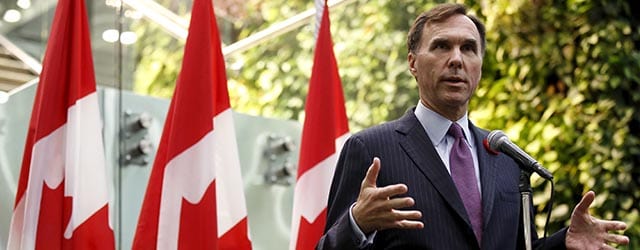The Liberal Party representatives who will form Canada’s next government will field several key cabinet posts. Rookie MP Bill Morneau is taking one of the most coveted—minister of Finance.

Morneau, who most recently served as executive chairman of Canada’s (and one of North America’s) largest pension and benefits consulting firm—Morneau Shepell—brings to the job an entrepreneurial eye that has been, perhaps, somewhat lacking in previous Finance ministers.
“Even though [the Liberal Party campaigned] on a platform of running deficits for three years, Morneau understands that he will be the cornerstone of the government and the economy, so his initial instincts have really been quite impressive,” says Glen Hodgson, senior vice president and chief economist with The Conference Board of Canada. Hodgson is talking about Morneau’s public comments on the need to spend carefully but well.
But, he adds, “The challenge for anyone new to politics is that they get put into the meat grinder.” That includes public scrutiny and opposition party scrutiny, as well as the infighting in their own party and the jockeying for funds between ministries.
One of the areas in which newly elected prime minister Justin Trudeau has promised to spend is infrastructure. Although Morneau’s first order of business is expected to be tax legislation, Hodgson says he will soon need to come up with a multiyear plan to tackle infrastructure broadly. “It’s not just about responding every day to pressures for new roads and sewer pipes,” he says.
Morneau must collaborate with provincial and local governments on the plan, since the federal government spends little on infrastructure on its own. “The purpose of the plan is to make sure we are building a foundation for the private sector,” explains Hodgson. “Public infrastructure is building and operating a plan for a national economy.”
The new Finance minister will have to use every form of innovative financing available—models such as public-private partnerships (P3s). Hodgson suggests this could be the time for Morneau and the government to consider a Canadian national infrastructure bank for financing projects.
Morneau has promised to present an updated economic overview by year-end. What will it look like? Speaking to the press recently, he said Canada needs to grow. “Infrastructure investments—investments that we can see, that can make a real difference in people’s lives and potentially improve our economy at the same time—are important.”



